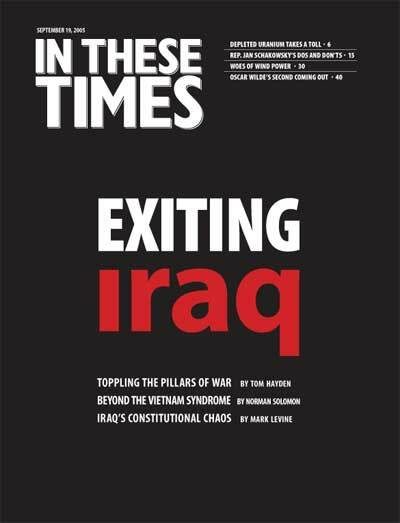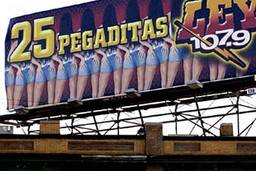A Turning Point
Organizers say that September’s massive gathering in D.C. will crystallize antiwar sentiment
Phoebe Connelly
United for Peace and Justice (UFPJ) is coordinating a three-day antiwar mobilization on September 24 – 26 in Washington, D.C. In mid-August, In These Times spoke with mobilizing coordinator L.A. Kauffman about preparations for what promises to be an historic event.
How did the September “Anti-War Mobilization” come about?
We’ve been planning this since the spring. Then, in June, there was major motion in Congress around the war, and a real feeling that the years of antiwar mobilization were finally having an effect in the legislative arena.
Congress has been complicit in this war since day one, and a lot of politicians have not been held to account for their support of Bush’s policies. So one key part of the mobilization is a grassroots lobbying day on Monday the 26th, where people will be meeting with their senators and representatives and urging them to speak out against the war. Of course, Bush is ultimately responsible for the war, and as a reflection of that, we will also be holding, on that same day, a large-scale nonviolent direction action at the White House.
You’re calling it a “mobilization” not a “march.” What’s different?
When we say “mobilization” we are talking about the entire package: three days of action. On Saturday the 24th, there will be a short rally, then a massive march at midday, and in the late afternoon a concert, “Operation Ceasefire.” Throughout the entire day, there will be an antiwar festival on the Washington Monument grounds with tents filled with tables with resources and materials – it’s a way for people to plug into campaigns like those countering military recruitment, protesting the use of depleted uranium, and defending immigrant rights and civil liberties.
You know, you often go to marches excited; it’s powerful, and inspiring. But it’s often not clear what the next step is. We’re working to be very integrated with local grassroots organizing, to help those who are outraged plug into the wide range of campaigns they could be a part of on a longer term basis, and give them tools to intensify their local organizing.
In your position paper on the mobilization you say you hope to “go outside our comfort zones and speak to people our movements don’t typically reach.” How have you done this?
For too long the Bush administration has tried to hold the moral high ground while waging an immoral war. With Clergy and Laity Concerned About Iraq, we’re bringing an antiwar message into churches, synagogues, mosques. Response has been tremendous, has reached a lot of folks who aren’t the usual suspects, aren’t the classic long-term left-wing activists who attend protests on a regular basis.
We also have massive leafleting operations underway in New York City and Washington, D.C. We’re attending summer festivals and street fairs, leafleting at shopping centers, you name it. More than 175,000 leaflets have already been distributed that way, enabling organizers to have one-to-one conversations with people and build grassroots buzz about the mobilization.
Cindy Sheehan has stepped forward as a strong, important antiwar figure. Who else should we be watching?
Cindy Sheehan’s grief and emotion are very powerful, but even she will be the first to say that she is only one of many who have lost loved ones in this war. There are numerous other military families and family members of those killed in action who have been speaking out publicly.
A lot of the heroes of this movement are not visible: They’re high school students resisting predatory military recruiters, or communities holding weekly antiwar vigils, individuals holding signs and bearing witness. That kind of work is not captured in the media spotlight, but it’s been extremely important in steadily building a base of opposition.
There is a real sense that this could be the turning point, that popular opinion has turned so strongly against the war. This mobilization has the potential to take the antiwar movement to the next level, the power to force the administration to bring the troops home.




